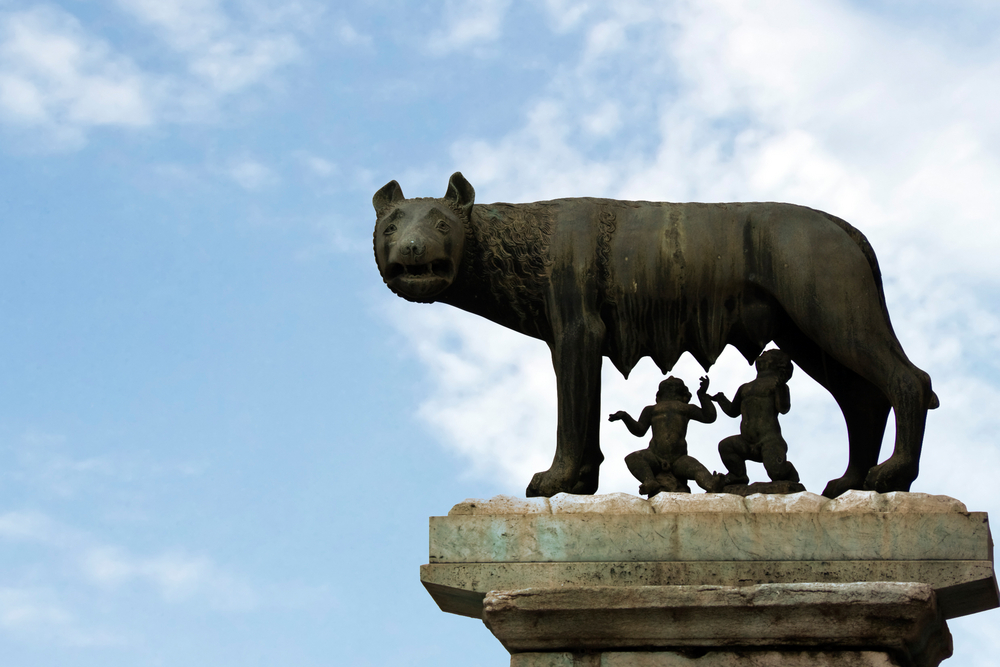Feral Children: Lore of the Wild Child

The feral child — a child raised by wild animals — is common in myth and folklore. Feral children are typically thought of as having been raised without human parental contact. A boy or girl raised by wolves — or bears or apes — is the original "wild child," often having little or no language ability or manners. Because feral children lack socialization, they are sometimes considered to represent a pure natural human state.
Stories of feral children date back at least to Romulus and Remus, the twin brothers of Roman mythology rescued from certain death and raised by a wolf. In modern times, the feral child image evokes a strong romanticism for many people. This was especially true at the turn of the last century. Rudyard Kipling made a hero of the feral child Mowgli — an Indian boy raised by wolves — in his classic and wildly popular 1894 collection of stories "The Jungle Book." Writer Edgar Rice Burroughs created Tarzan, a boy raised by African apes, in the early 1900s, and his character remains popular in books and film a century later.
These are, of course, fictional feral children, but what about real ones? A story recounted in the Reader's Digest book "Mysteries of the Unexplained" shows that feral children date back many centuries: "On July 27, 1724, the boy who came to be called Wild Peter was captured near the German town of Hamelin. He appeared to be about 12 years old. He could not speak and ate only vegetables and grass and sucked the juice of green stalks; at first he rejected bread. The story of the wild boy spread, and in February 1726 King George I of England sent for him."
The boy became a celebrated case, and turned out to be more influential than he could have imagined: the French political philosopher Jean-Jacques Rousseau pointed to this feral child as an example of a "natural man," one untainted by modern life or learning. However, questions were raised about Peter's story: "a German naturalist and scholar later examined all the earliest documents on Wild Peter and concluded that he must have lived with people until shortly before he was captured, because he wore a rag around has neck and parts of his body were pale rather than tanned, suggesting that he had worn breeches [trousers]." Wild Peter turned out to be just Peter.
Another celebrated account of feral children came from a reverend named J.A.L. Singh, who in the 1920s discovered two young girls (one about 18 months old, the other about 8 years old) in Bengal, India, who were raised by wolves. Singh claimed that the girls, whom he named Amala and Kamala, preferred raw meat, walked on all fours and would howl at the moon like a wolf. He tried, with limited success, to get them to speak and walk upright. The case aroused great interest, and several books were written about their mysterious case, including one on child development
Wild Child: Truth or Myth?
Over the centuries many stories of feral children have been told; fortunately, virtually all of them have later been revealed as hoaxes. In the strange case of the Indian girls Amala and Kamala, for example, later research concluded that though the girls did exist, they had not been raised by wolves, but instead suffered from developmental and birth defects. There was no independent corroboration of Singh's claims (we only have his diary), and it is generally accepted that he faked or exaggerated his interaction with the feral children.
More recently, there was a 1997 memoir of ayoung Jewish girl who escaped the German Holocaust by fleeing into the forest where she was raised by a pack of wolves. The book, "Misha: A Memoir of the Holocaust Years," was a bestseller before finally being exposed as a fictional hoax. And in September 2011, a mysterious teenager calling himself Ray showed up at a police station in Germany, claiming to have lived alone in a forest for at least five years. The boy, who was in good health and spoke English and German, claimed not to know his identity. After nearly a year of investigation, the police discovered that "Ray" was actually a 21-year-old man who got bored with his life in the Netherlands and decided to quit his job and reinvent himself as a semi-feral teen.
Get the world’s most fascinating discoveries delivered straight to your inbox.
Feral children — if they ever truly existed — are relics of the past. Except in the most remote regions of the world (such as tribes in the Amazon jungle), certificates are issued for live births, and it's unlikely that a child would be born and somehow completely disappear into the wild to be raised by animals. Even if a family lived in the remote jungle and both parents died suddenly, the lost infant or child would likely starve to death (or be eaten by wild animals instead of being nurtured into adolescence by them).
Yet the stories remain with us. Part of the reason feral children have long captured the public's imagination is that they symbolize humanity's ambiguous relationship with other animals. These young feral humans — much like Bigfoot in some ways — fascinate us because they dwell in the twilight between not quite human and not quite animal.
Benjamin Radford, M.Ed., is deputy editor of Skeptical Inquirer science magazine and author of six books including "The Martians Have Landed: A History of Media Panics and Hoaxes." His website is www.BenjaminRadford.com.



